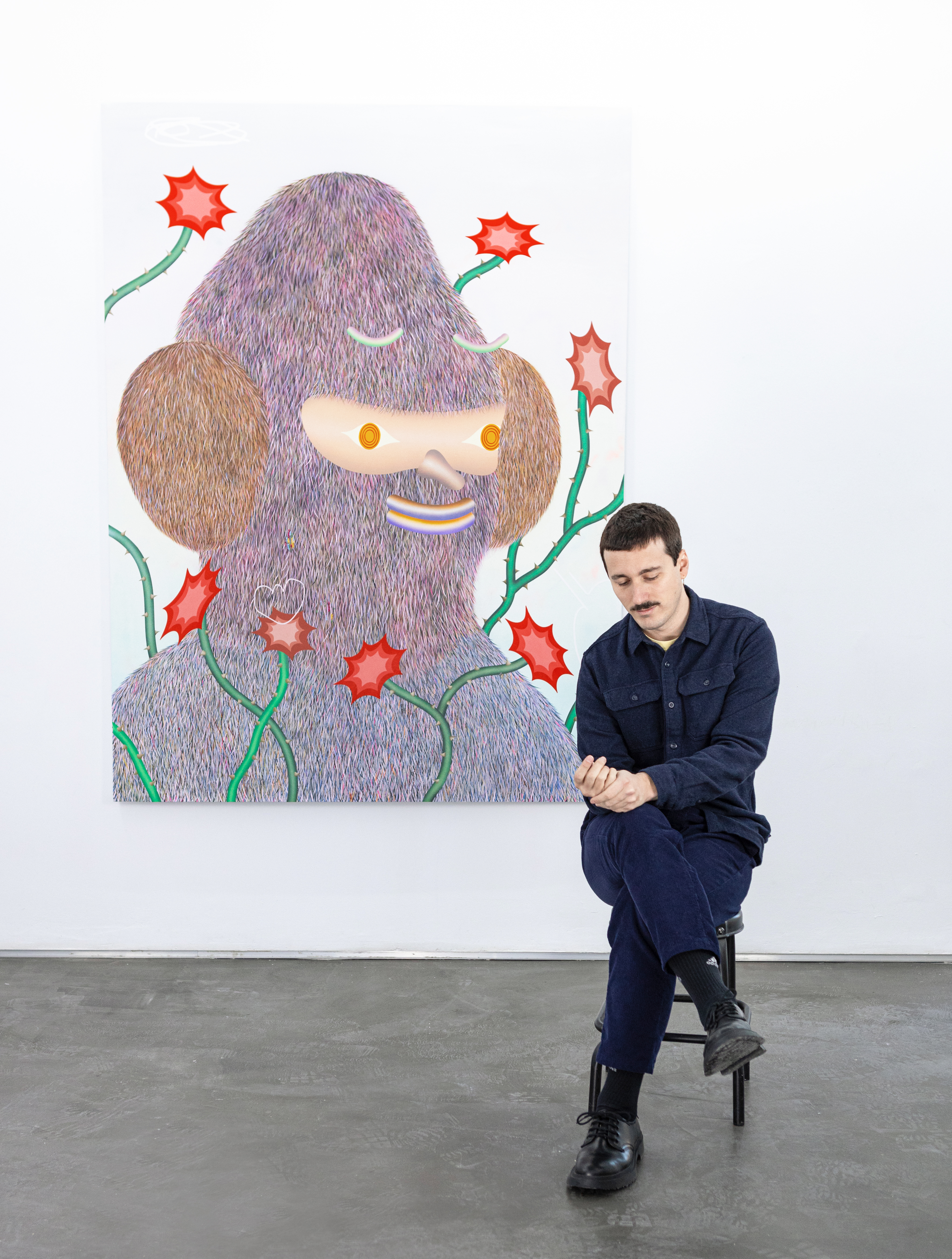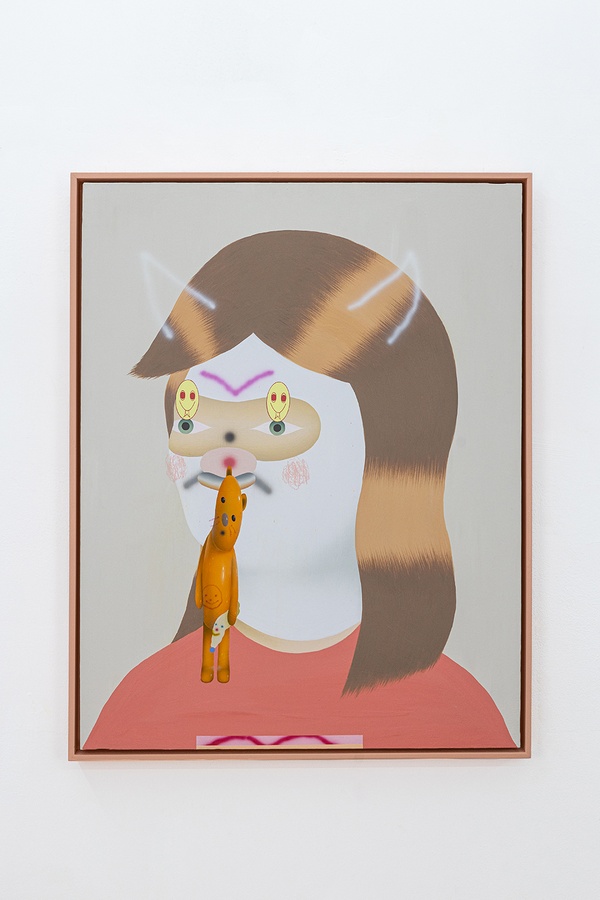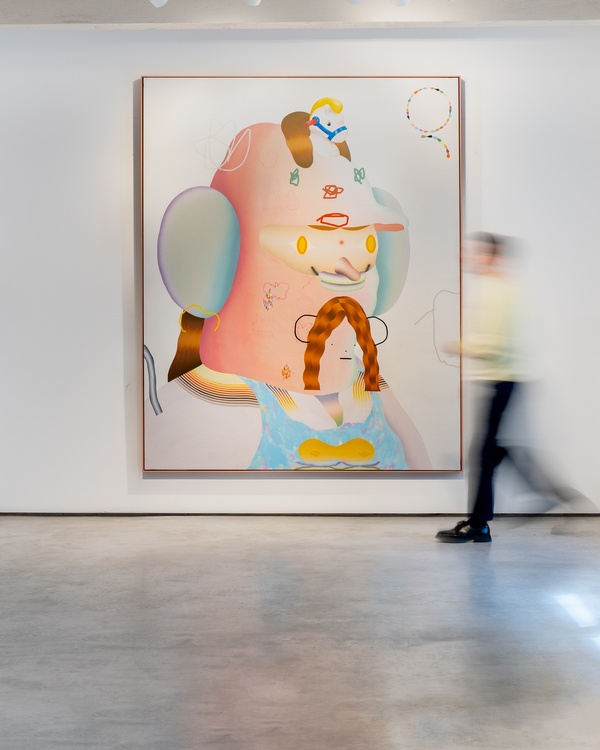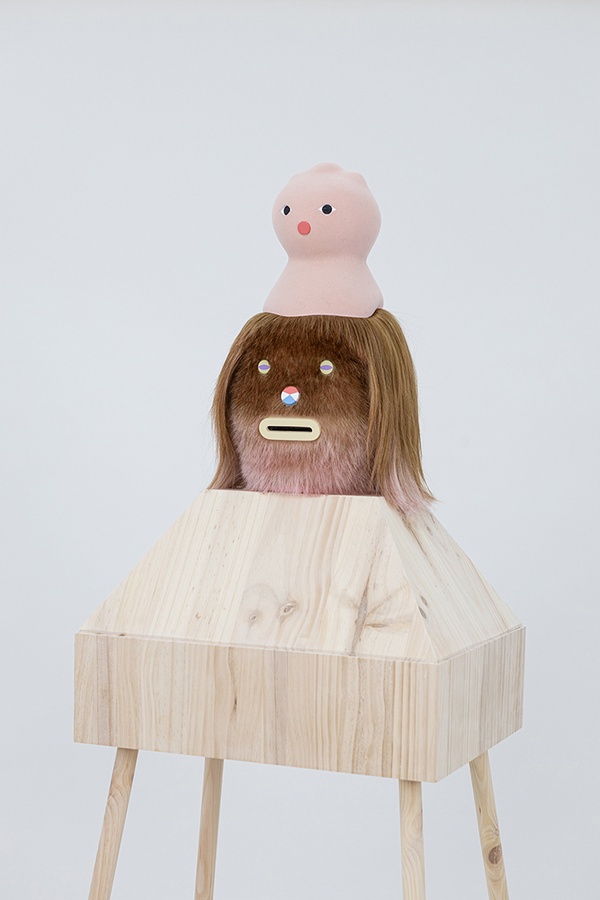
Grip
Face
Grip Face is visual artist David Oliver’s alter ego.
“Sandpaper head”-that's how his skateboarding fellows used to call him back in the early 2000s in La Palma. Like a significant number of artists belonging to the millennial generation, he initiated his visual and aesthetic education: rollerblading in the streets, reading comics, watching anime, listening to Anglo-Saxon music and thoroughly studying books, CDs, and fanzine covers. Under the auspices of the 1990s American underground wave, the graphics used by the Punk movement in the 1980s and the Asian naive art, Grip Face dived into the initiation rite of graffiti plastics as well as in its subsequent deconstruction; very early on, the insurrection of the media itself allowed him to understand art as a means to survive. Drawing and painting turned into weapons of mass destruction against the anxiety of the contemporary world. And thus began a multifaceted artistic career that would revolve mainly around constantly reexamining the very contemplation of his own pleiad. With this vocation to being an artist-engineer, Grip Face bridges the gap between contexts, elements, techniques, spaces and people. He draws part of his primal language, built mainly within the public sphere- represented by projects like Doors without destination and Black faces (published in 2016 in book format under the same title)- shifting it instead to private spaces like galleries of contemporary art through site-specific installations, sculptures, paintings or tapestries.
Projects like Not Rented to Humans or Black Rubbish is the Future reflect the angst and the distress incurred by being both actors and witnesses of our own home’s self-destruction. His sketchbooks, which he keeps with him since his teens, and which constitute the purest as well as the darkest side of his work, are a prelude to most of his finished works.
Moving around with ease among the nooks seems to be an idiosyncratic quality of this visual artist, maybe because he always perceived himself as an outsider, never feeling quite comfortable with any tag whatsoever, while feeling equally anxious and always in the expectative when faced with the prospect of a society constantly in disguise. A society that seems irretrievably compelled to technological massification, communication through devices, to superficial relationships and the concealment of truth.
Similar to a screen that repeats an “error” message in fivefold staggeringly overlapping windows, Grip Face’s painting provides a playful space full of layers within which one may dissect the concerns of an impatient generation, hungry for information- reliable or not- and to whom the internet landscape seems to be the best platform onto which one may learn the savoir-faire properly. His cloths are not familiar with the impatient indexes pommeling on the mouse’s left side; every layer of every piece of information is processed in a precise and meticulous way and the technique is never trivial.
Every layer is submitted to intervention, is crossed off or covered, thus shaping a meta-universe riddled with aesthetic references that are intrinsic to Generation Y (and to Generation Z, and, most probably to all future letters to come too for that matter) and implemented with a technical precision of its own, through which he learned to paint under the yoke of immediacy. They all belong to an endless series and an evolving exploration, both part of the author’s learning process crafting them. What’s meaningful to Grip Face is continuity, this inability to see the end product, and the uncertainty as to whether the painting will lead it. It’s about living the artistic expression the way we live in the world, transiently and in a doubtful present.







